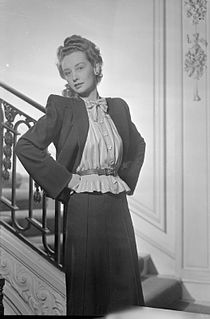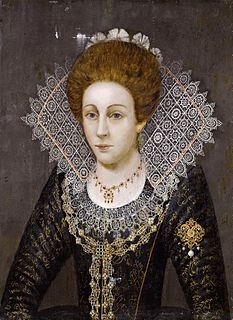 W
WThe Arrow Collar Man was the name given to the various male models who appeared in advertisements for shirts and detachable shirt collars manufactured by Cluett Peabody & Company of Troy, New York. The original campaign ran from 1905–31, though the company continued to refer to men in its ads and its consumers as "Arrow men" much later.
 W
WAn ascot tie, or ascot or hanker-tie, is a neckband with wide pointed wings, traditionally made of pale grey patterned silk. This wide tie is usually patterned, folded over, and fastened with a tie pin or tie clip. It is usually reserved for formal wear with morning dress for daytime weddings and worn with a cutaway morning coat and striped grey formal trousers. This type of dress cravat is made of a thicker, woven type of silk similar to a modern tie and is traditionally either grey or black.
 W
WA band collar is a standing band-shaped collar that encircles the neck without a full turndown or a collar "cape". It can be any height or "stand", but is usually under 2" at the front, so as not to push up into the chin. Variations of the band collar are the clerical collar, the mandarin collar and the cadet collar.
 W
WBands are a form of formal neckwear, worn by some clergy and lawyers, and with some forms of academic dress. They take the form of two oblong pieces of cloth, usually though not invariably white, which are tied to the neck. The word bands is usually plural because they require two similar parts and did not come as one piece of cloth. Those worn by clergy are often called preaching bands, preaching tabs, or Geneva bands; those worn by lawyers are called barrister's bands or, more usually in Ireland and Canada, tabs.
 W
WThis is a list of notable bow tie wearers, real and fictional; notable people for whom the wearing of a bow tie is also a notable characteristic.A list of bow tie devotees reads like a Who's Who of rugged individualists.
 W
WA clerical collar, clergy collar, Roman collar or, informally, dog collar is an item of Christian clerical clothing. The collar closes at the back of the neck, presenting a seamless front. The shirt may have the collar built in. The clerical collar is almost always white and was originally made of cotton or linen but is now frequently made of plastic. Sometimes it is attached with a collaret or collarino that covers the white collar almost completely, except for a small white square at the base of the throat, and sometimes with the top edge of the collar exposed to mimic the collar of a cassock. It may simply be a detachable tab of white in the front of the clerical shirt. The clerical shirt is traditionally black, but today is available in a variety of colors depending on the wearer's preference. Once the clerical collar is removed the garment is indistinguishable from any other shirt. When clergy are delivering sermons, they sometimes attach preaching bands to their clerical collar.
 W
WIn a BDSM context, a collar is a device of any material worn by a person around the neck to indicate their submissive or slave status in a BDSM relationship. A person wearing a collar to symbolize their relationship with another is said to be collared. Some people conduct formal "collaring ceremonies", which are regarded as effectively solemnizing their relationship in a similar way as a marriage ceremony and the collar having similar significance as a wedding ring. The standard form of a collar is a black leather band around the neck, often with metal D-rings added to allow the attachment of a leash, rope or other restraints. Some people may wear an ordinary choker or jewelry necklace instead.
 W
WIn clothing, a collar is the part of a shirt, dress, coat or blouse that fastens around or frames the neck. Among clothing construction professionals, a collar is differentiated from other necklines such as revers and lapels, by being made from a separate piece of fabric, rather than a folded or cut part of the same piece of fabric used for the main body of the garment.
 W
WA collar is an ornate chain, often made of gold and enamel, and set with precious stones, which is worn about the neck as a symbol of membership in various chivalric orders. It is a particular form of the livery collar, the grandest form of the widespread phenomenon of livery in the Middle Ages and Early Modern Period. Orders which have several grades often reserve the collar for the highest grade. The links of the chain are usually composed of symbols of the order, and the badge of the order normally hangs down in front. Sometimes the badge is referred to by what is depicted on it; for instance, the badge that hangs from the chain of the Order of the Garter is referred to as "the George".
 W
WA collar pin is a piece of men's jewelry, which holds the two ends of a dress shirt collar together and passes underneath the knot of a necktie. Functioning in a similar way as a tabbed collar, it keeps the collar in place and lifts the knot to provide a more aesthetically pleasing arc to the necktie.
 W
WA collar stay, collar stick, collar tab, collar stiffener, or collar stiff is a shirt accessory consisting of a smooth strip of rigid material, rounded at one end and pointed at the other, inserted into specially made pockets on the underside of a shirt collar to stabilize the collar's points. The stays ensure that the collar lies flat against the collarbone, looking crisp and remaining in the correct place.
 W
WA detachable collar is a shirt collar separate from the shirt, fastened to it by studs. The collar is usually made of a different fabric from the shirt, in which case it is almost always white, and, being unattached to the shirt, can be starched to a hard cardboard-like consistency.
 W
WA fichu is a large, square kerchief worn by women to fill in the low neckline of a bodice.
 W
WA gorget, from the French gorge meaning throat, was a band of linen wrapped around a woman's neck and head in the medieval period or the lower part of a simple chaperon hood. The term later described a steel or leather collar to protect the throat, a set of pieces of plate armour, or a single piece of plate armour hanging from the neck and covering the throat and chest. Later, particularly from the 18th century, the gorget became primarily ornamental, serving as a symbolic accessory on military uniforms, a use which has survived in some armies.
 W
WA jabot is a decorative clothing accessory consisting of lace or other fabric falling from the throat, suspended from or attached to a neckband or collar; or simply pinned at the throat. It evolved from the frilling or ruffles decorating the front of a shirt in the 19th century.
 W
WA kerchief, also known as a bandana or bandanna, is a triangular or square piece of cloth tied around the head, face or neck for protective or decorative purposes. The popularity of head kerchiefs may vary by culture or religion, and may vary among Orthodox Jewish and Christian, Catholic, Amish, and Muslim people.
 W
WA kipper tie is a type of necktie primarily fashionable in Britain in the mid-1960s to late 1970s. The primary characteristics of the kipper tie are its extreme breadth and often garish colours and patterns.
 W
WLeatherneck is a military slang term for a member of the United States Marine Corps, or of the Corps of Royal Marines. It is generally believed to originate in the wearing of a "leather stock" that went around the neck. Contrary to popular opinion, it was not used to protect the neck during swordfights. It was merely to keep the head and neck erect when wearing the uniform.
 W
WA neck gaiter, or neck warmer, also known as a buff, is an article of clothing worn about the neck for warmth. It is a closed tube of fabric, often thick fleece, merino wool, synthetic wicking, or knit material, which is slipped on and off over the head. It can also be pulled up over the mouth to keep out wind, sand and other debris. Some balaclavas have a thin hood attached to what is essentially a neck gaiter.
 W
WA neck guard is a piece of protective equipment worn by an ice hockey player around the neck area. The guard is designed to prevent injury to the neck by pucks, hockey sticks, and skate blades.
 W
WA neck knife is a knife worn on a cord hanging from a person's neck. It usually means a small fixed-blade knife which is carried by means of a cord, by which the knife sheath is suspended from around one's neck. They can either hang handle up or handle down. The knife may be hung from a loop of natural or synthetic cord, a length of braided paracord, a leather thong, or even a breakaway beaded or ball chain such as those utilized for military dog tags.
 W
WA necklet is a type of decoration which is designed to be worn and displayed around a person's neck, rather than hung (draped) from the chest as is the standard practice for displaying most decorations.
 W
WThe neckline is the top edge of a garment that surrounds the neck, especially from the front view. Neckline also refers to the overall line between all the layers of clothing and the neck and shoulders of a person, ignoring the unseen undergarments.
 W
WA necktie, or simply a tie, is a long piece of cloth, worn, usually by men, for decorative purposes around the neck, resting under the shirt collar and knotted at the throat.
 W
WThe pañuelo or alampay is a Filipino lace-like embroidered neck scarf or shawl worn around the shoulders over the camisa (blouse). They were square-shaped and were folded in half into a triangle when worn. Pañuelos are the direct predecessors of the Manila shawl.
 W
WA partlet or partlett is a fashion accessory of the sixteenth century. The partlet was a sleeveless garment worn over the neck and shoulders, or to fill in a low neckline.
 W
WA Peter Pan collar is a style of clothing collar, flat in design with rounded corners. It is named after the collar of Maude Adams's costume in her 1905 role as Peter Pan, although similar styles had been worn before this date.
 W
WA lavallière, also called a pussycat bow, is a style of neckwear often associated with women's and girls' blouses and bodices. It takes the form of a bow tied at the neck similar to those sometimes tied around the necks of kittens and cats.
 W
WA ruff is an item of clothing worn in Western, Central, and Northern Europe from the mid-16th century to the mid-17th century. The round and flat variation is often called a millstone collar after its resemblance to millstones for grinding grain.
 W
WA standard, also called a pizaine, was a collar of mail often worn with plate armour. It protected the throat and neck and usually extended over the shoulders; it was in use from the 14th to the 16th century. Unlike the similar aventail, it was not attached to a helmet. It was called a standard because the part encircling the neck and throat was able to stand upright without any external stiffening. This part of the standard was composed of links joined 6-in-1, which made it less flexible and also stronger; the usual, more flexible, ratio of mail linking was 4-in-1. The lower, shoulder-covering, part of the standard was of 4-in-1 linked mail. Some standards were decorated with edging in brass or bronze links, and/or were given a zig-zag lower edge (vandyked). Standards were sometimes worn under an aventail, or even a gorget, for extra protection. However, standards were often worn without other neck protection by soldiers who valued an unencumbered facility to move the head over additional protection. Standards were popular with archers, whose mobility was at a premium. Standards were frequently worn with helmets that did not afford integral neck and throat protection, such as the sallet, barbute, and kettle hat.
 W
WA supportasse or underpropper is a stiffened support for a ruff or collar. Essential items of courtly fashion in the late 16th and early 17th centuries, supportasses are sometimes called piccadills, whisks, or rebatos, terms used at different times for both the supporters and the various lace or linen collar styles to which they were attached.I pray you, sir, what say you to these great ruffs, which are borne up with supporters and rebatoes, as it were with post and rail?